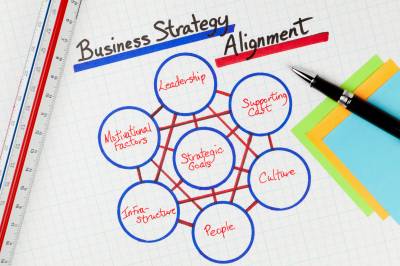
Success in business comes from crafting and executing effective business strategies. The attainment of strong financial performance comes from integrating and aligning the various strategies of the business into a cohesive force. A company’s supply chain strategy, of which transportation strategy is a key component, is often a critical piece of the company’s business strategy. We often observe that the freight strategies of our clients are not well aligned with their business strategies. In fact, they often inhibit these companies from achieving the bottom line results that they are so desperately seeking. Here are some of the things that we commonly observe.
A Failure to Recruit and Train Top Quality Talent
As noted in an earlier blog (http://www.dantranscon.com/index.php/blog/entry/becoming-a-best-in-class-shipper-3-organization), it takes leadership and management skill to be an effective supply chain executive. By not hiring and training top quality management talent to this position, the company receives mediocre leadership and weak performance.
Some companies don’t fully appreciate the scope of knowledge (http://www.dantranscon.com/index.php/blog/entry/becoming-a-best-in-class-shipper-2-knowledge) that is needed to be a Best in Class Transportation operation. While companies will go out and hire top notch sales and engineering professionals, they will “force fit” unqualified individuals into the role of Transportation Manager. Without the knowledge, skills and resources, the company gets what it deserves – – poor performance.
A Singular Focus on Outbound Freight Management
Many companies focus on the outbound movement of their freight to their DCs, retail stores or customers. They let their vendors control all or some of the deliveries of raw materials or finished products to their main manufacturing or distribution facility. This can produce several negative financial impacts. For many vendors, freight is a profit centre. They mark up their freight costs and include the inflated cost in the landed cost. By not having control of inbound freight movements, this restricts the leverage a company can have with its carriers when it comes time to negotiate freight rates. It also limits the opportunity to perform consolidations or create round trips to further reduce freight costs.
A Focus on Costs at the Expense of Service
We also observe that a number of companies are not providing their clients with the level of service they require. This can occur for several reasons. Some carriers may be picking up or delivering the shipper’s products at the wrong time. Their transportation networks are not aligned to the needs of some of its customers. While many manufacturers and retailers understand the value of quality customer service, they become greedy for cost savings when selecting their carrier network. Selecting low quality, “bottom feeders” ends up costing the company through service failures and customer turnover.
Ineffective use of Technology to Drive Transportation Performance
Some companies do not have the technology in place to effectively manage their freight transportation. Their IT strategy, as it pertains to freight transportation, is not aligned with their business strategy. As customer orders come in, we have observed multiple shipments coming from the same vendors, going to the same distribution facility, on the same day. The technology is not there to provide the visibility so these shipments can be consolidated into large courier or LTL shipments. Without good technology, their shipping personnel may not select the correct mode or the best carrier at the best price. These shippers are simply overpaying for freight.
Inadequate metrics and KPIs are often associated with weak information systems. While companies will have good financial and operations metrics to manage their business, they will have rudimentary KPIs to manage their freight operations. The company’s freight budget may include the total projected freight spend by division, but it won’t include breakdowns by mode or by freight cost (e.g. line haul, fuel surcharge, accessorial charges). It is no wonder that without the technology and information tools, freight management is not at a high enough level to permit effective alignment with the company’s other business strategies.
For an item that can be so important to a company’s bottom line, it is puzzling to see so many organizations not give transportation the attention it requires. On the other hand, for companies that do put a priority on the management of freight transportation and adopt Best-in-Class freight management strategies, this can be a differentiator to increase margins, market share and profitability.
To stay up to date on Best Practices in Freight Management, follow me on Twitter @DanGoodwill, join the Freight Management Best Practices group on LinkedIn and subscribe to Dan’s Transportation Newspaper (http://paper.li/DanGoodwill/1342211466).



















